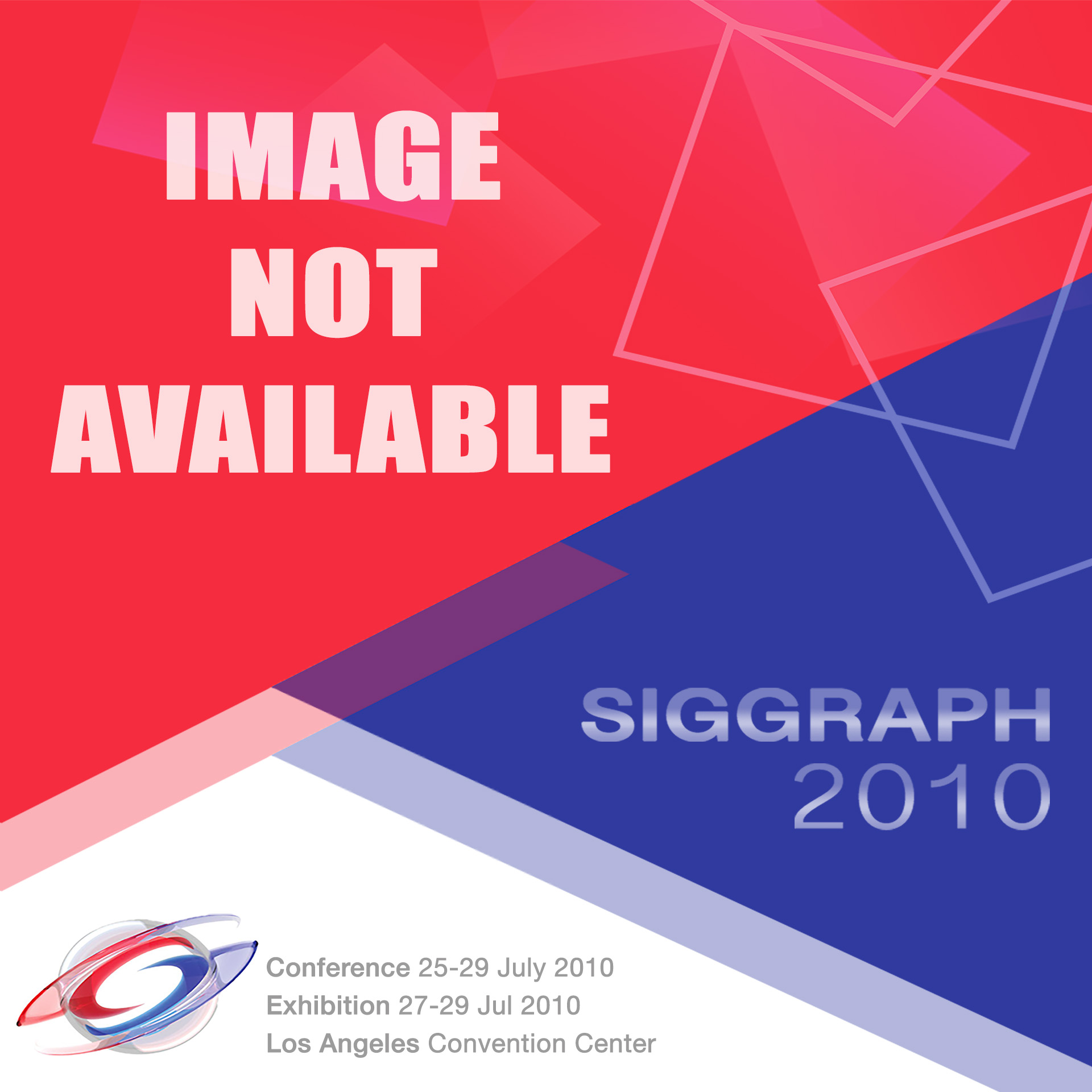“Modeling and Rendering of Impossible Figures” by Wu, Fu, Yeung, Jia and Tang
Conference:
Type(s):
Title:
- Modeling and Rendering of Impossible Figures
Presenter(s)/Author(s):
Abstract:
This article introduces an optimization approach for modeling and rendering impossible figures. Our solution is inspired by how modeling artists construct physical 3D models to produce a valid 2D view of an impossible figure. Given a set of 3D locally possible parts of the figure, our algorithm automatically optimizes a view-dependent 3D model, subject to the necessary 3D constraints for rendering the impossible figure at the desired novel viewpoint. A linear and constrained least-squares solution to the optimization problem is derived, thereby allowing an efficient computation and rendering new views of impossible figures at interactive rates. Once the optimized model is available, a variety of compelling rendering effects can be applied to the impossible figure.
References:
- Agarwal, S., Ramamoorthi, R., Belongie, S., and Jensen, H. W. 2003. Structured importance sampling of environment maps. ACM Trans. Graph. 22, 3, 605–612.
- Alexeev, V. 2008. Impossible world. http://im-possible.info/english/.
- Bookstein, F. 1989. Principal warps: Thin-plate splines and the decomposition of deformations. IEEE Trans. Patt. Analy. Mach. Intell. 11, 6, 567–585.
- Elber, G. 2002. Escher for real. http://www.cs.technion.ac.il/~gershon/EscherForReal.
- Ernst, B. 1987. Adventures with Impossible Figures. Tarquin, Stradbroke, England.
- Heyden, A. 1996. On the consistency of line-drawings, obtained by projections of piecewise planar objects. J. Math. Imaging Vis. 6, 4, 393–412.
- Huffman, D. A. 1971. Impossible objects as nonsense sentences. Mach. Intell. 6, 295–323.
- Ju, T., Zhou, Q.-Y., and Hu, S.-M. 2007. Editing the topology of 3d models by sketching. ACM Trans. Graph. 26, 3, 42.
- Khoh, C. W. and Kovesi, P. 1999. Animating impossible objects. www.csse.uwa.edu.au/~pk/Impossible/impossible.html.
- Lipson, A. 2002. Andrew lipson’s LEGO page. http://www. andrewlipson.com/lego.htm.
- Matusik, W., Pfister, H., Brand, M., and McMillan, L. 2003. A data-driven reflectance model. ACM Trans. Graph. 22, 3, 759–769.
- M.C. Escher Foundation. The official M.C.Escher website. http://www.mcescher.com.
- Nealen, A., Igarashi, T., Sorkine, O., and Alexa, M. 2007. Fibermesh: Designing freeform surfaces with 3D curves. ACM Trans. Graph. 26, 3, 41.
- Owada, S. and Fujiki, J. 2008. Dynafusion: A modeling system for interactive impossible objects. In Proceedings of the Conference on Non-Photorealistic Animation and Rendering (NPAR). 65–68.
- Penrose, L. S. and Penrose, R. 1958. Impossible objects: A special type of illusion. Brit. J. Psychol. 49, 31–33.
- Rademacher, P. 1999. View-dependent geometry. In Proceedings of the 26th Annual Conference on Computer Graphics and Interactive Techniques (SIGGRAPH’99). ACM Press/Addison-Wesley, New York, 439–446.
- Savransky, G., Dimerman, D., and Gotsman, C. 1999. Modeling and rendering Escher-like impossible scenes. Comput. Graph. Forum 18, 2, 173–179.
- Schattschneider, D. and Emmer, M., Eds. 2003. M.C.Escher’s Legacy: A Centennial Celebration. Springer.
- Simanek, D. E. 1996. The principles of artistic illusions—Adding depth to illusions. http://www.lhup.edu/~dsimanek/3d/illus2.htm.
- Sugihara, K. 1982. Classification of impossible objects. Percept. 11, 65–74.
- Sugihara, K. 1986. Machine Interpretation of Line Drawings. The MIT Press.
- Sugihara, K. 1997. Three-Dimensional realization of anomalous pictures–An application of picture interpretation theory to toy design. Patt. Recogn. 30, 7, 1061–1067.
- Sun, J., Jia, J., Tang, C.-K., and Shum, H.-Y. 2004. Poisson matting. ACM Trans. Graph. 23, 3, 315–321.
- Tsuruno, S. 1997. The animation of M.C. Escher’s “Belvedere.” In Proceedings of the ACM SIGGRAPH Visual Conference. 237.
- Uribe, D. 2001. A set of impossible tiles. http://im-possible.info/english/articles/tiles/tiles.html.
- Wahba, G. 1990. Spline Models for Observational Data. SIAM.
- Wu, T.-P., Tang, C.-K., Brown, M. S., and Shum, H.-Y. 2007. Shapepalettes: Interactive normal transfer via sketching. ACM Trans. Graph. 26, 3, 44.
- Yu, J. and McMillan, L. 2004. A framework for multiperspective rendering. In Proceedings of the 15th Eurographics Workshop on Rendering Techniques (EGSR). 61–68.




